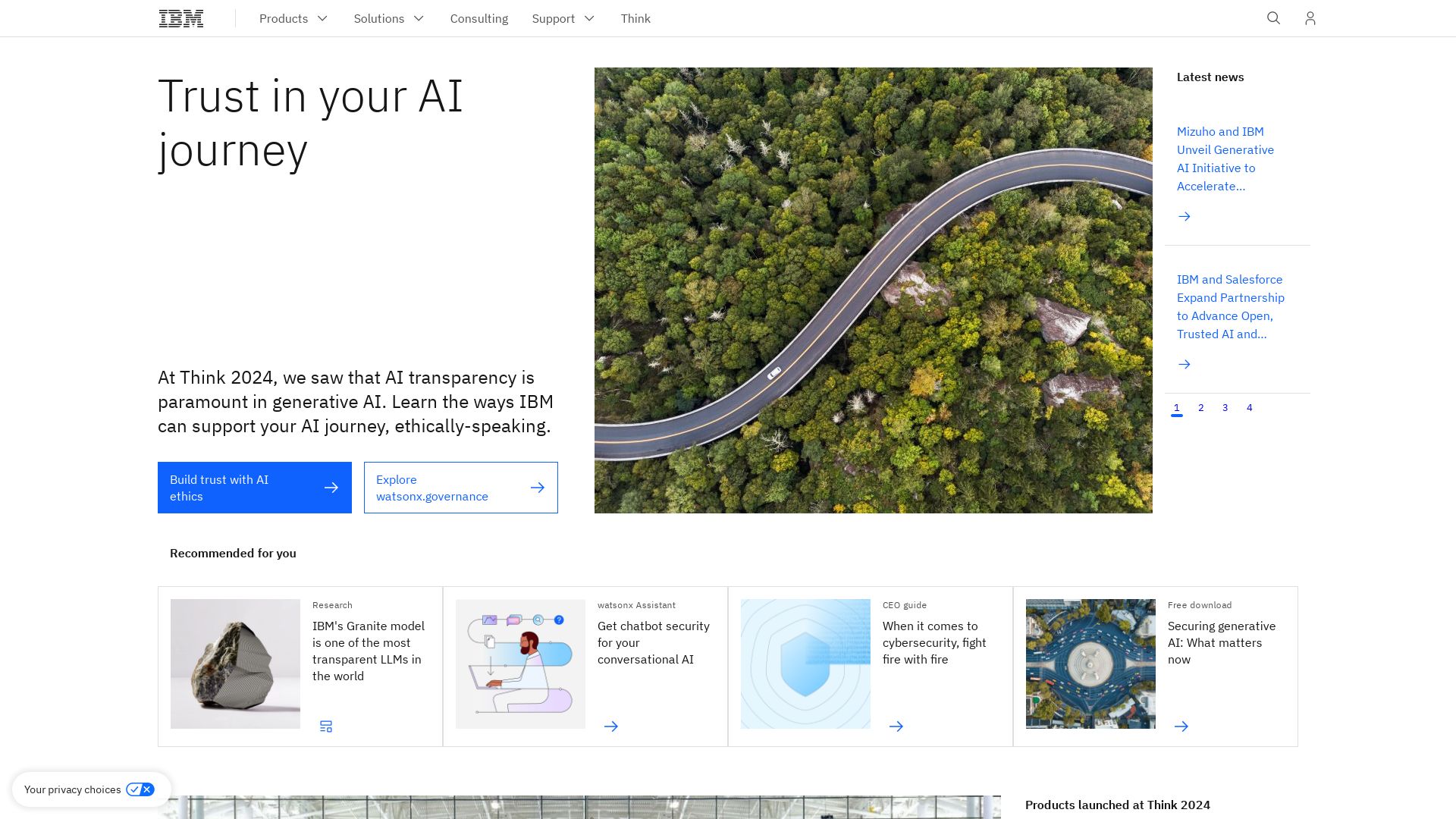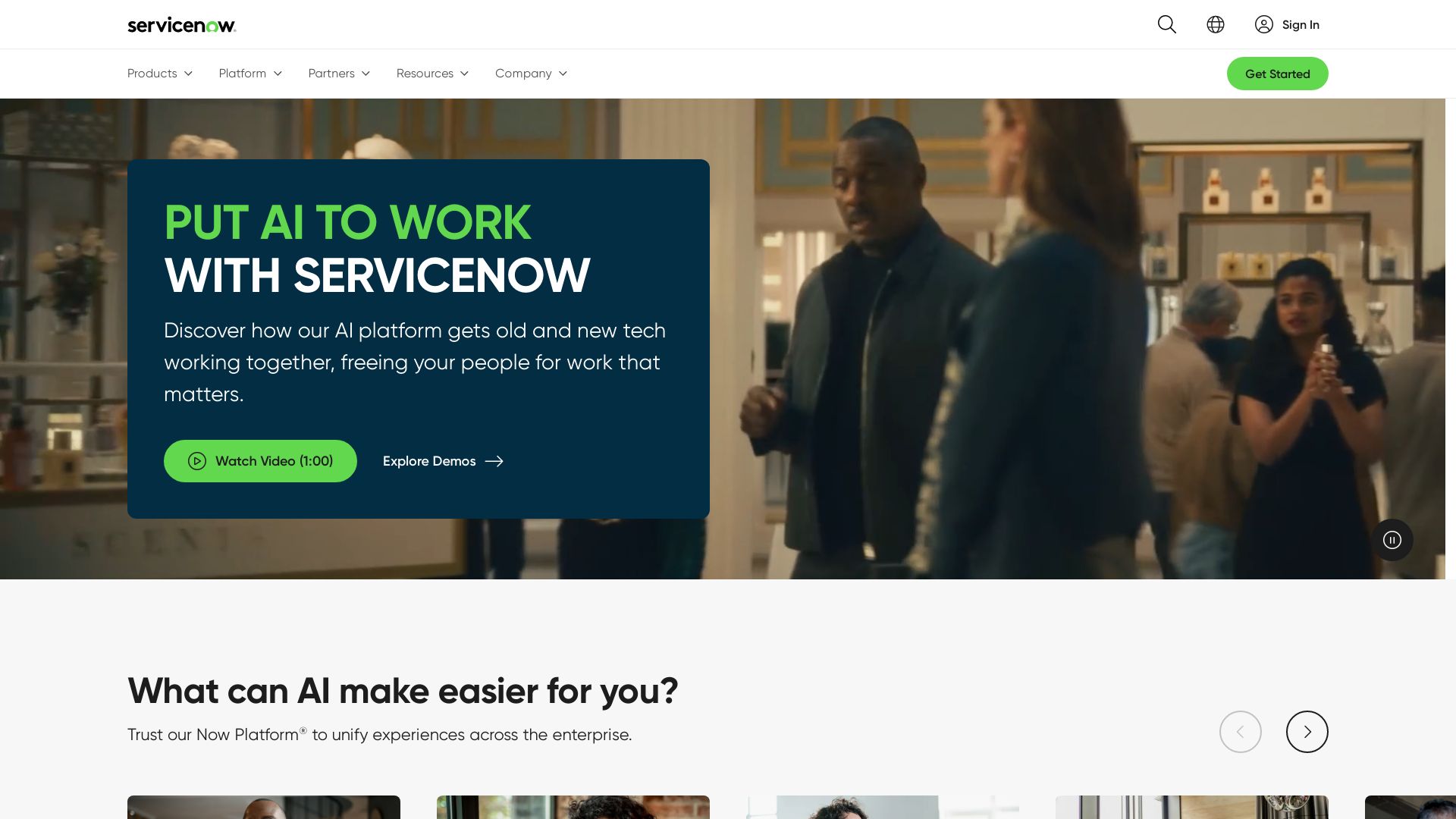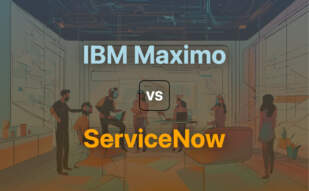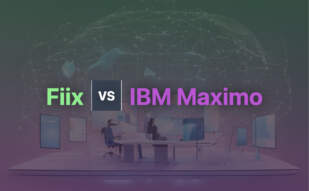
IBM Maximo

Steeped in technology advancement history, IBM Maximo is a renowned leader in the Enterprise Asset Management (EAM) and Computerized Maintenance Management Systems (CMMS) software market. Originating from Project Software & Development and later acquired by the tech titan IBM in 2005, Maximo’s illustrious journey now sees it renamed as IBM Maximo Manage in 2021.
IBM Maximo Top Features
- Asset Registry: Provides a comprehensive record of all assets throughout their lifecycle.
- Preventive Maintenance Work Orders: Simplifies the tracking of work activities.
- Inventory Control: Ensures optimal inventory levels and reduces wastage.
- Resource Management: Enables efficient allocation and utilization of resources.
- IBM Watson Analytics Integration: Offers business process review and insights, solidifying Maximo’s position as a data-driven solution.
| Affordability | Maximo is priced at a relatively reasonable rate starting from £131 per user, providing more value for your investment. |
| Efficient Implementation | IBM Maximo’s maintenance capabilities can be integrated effortlessly within approximately 20 days, ensuring minimal disruption to existing business operations. |
| Advanced Analytics and Reporting | Maximo facilitates deep insights for asset reliability and equipment status, allowing proactive decision-making. |
IBM Maximo Limitations
Despite its extensive features and capabilities, IBM Maximo was embroiled in a lawsuit for deal registration dispute in 2018 by Kalibrate Asset Management, that was later dismissed due to lack of contractual right evidence.
IBM Maximo Pricing
The starting price for Maximo is from £131 per user, making it an accessible solution for enterprises of various scales.
IBM Maximo Use Cases
Use case 1
Maximo is especially useful for manufacturing companies that require stringent asset management and maintenance control. Its comprehensive features ensure smooth operation and inventory control.
Use case 2
In the transportation sector, IBM Maximo can manage and maintain assets throughout their lifecycle, which in turn can augment service reliability and reduce unexpected asset downtime.
Use case 3
Companies in the energy and government sectors can leverage Maximo’s advanced analytics and reporting capabilities to ensure equipment reliability and timely maintenance.
ServiceNow

Residing at the crossroads of functionality and intuitiveness, ServiceNow, with its potent Software Asset Management application, uniquely facilitates efficient software installation and license management, primed for users across digital plains.
ServiceNow Top Features
- Enhanced user interface for ease of operation
- Comprehensive Software Asset Management setup for thorough application usage
- Licensing capabilities that bridge compliance and optimization
- Data-rich, preconfigured dashboards in Platform Analytics Solutions
- Wide range of publisher packs for extensive third-party app interfacing
- SaaS License Management for in-depth usage data visibility
- Software Spend Detection enabling robust financial tracking and optimization
- Substantial administrative capabilities including pattern normalization and reclamation rules
- Supports domain separation, yielding enhanced control over data, process and administrative task segmentation
- Customizable Quick start tests for validating functionality post configuration
| Feature | Benefits |
|---|---|
| Software Asset Management | Enables efficiency in software installation management and license compliance |
| SaaS License Management | Facilitates visibility into SaaS and SSO usage data for optimized license management |
| Software Spend Detection | Allows tracking, analysis, and optimization of software spend from imported financial data |
ServiceNow Downsides
- Intuition-driven setup and post-setup configurations might necessitate software familiarity
- Pricing factored on platform license use, has potential to inflate IT Asset Management application cost
ServiceNow Use Cases
Use case 1: Data Analytics
By leveraging preconfigured dashboards in its Platform Analytics Solutions, ServiceNow capacitates businesses to yield actionable data insights for advancing processes and practices.
Use case 2: License Management
With its SaaS License Management app, organizations can readily monitor and optimize their SaaS and SSO usage data, fortifying compliance management and license optimization.
Use case 3: Financial Tracking
ServiceNow’s Software Spend Detection application enables comprehensive software spend tracking and analysis, directly from imported financial data, facilitating effective budget optimization.
Tririga
Tririga reigns within the realm of Integrated Workplace Management Systems(IWMS), providing comprehensive solutions for asset and property management. Initially catered to diverse sectors, such as hospitality and aerospace, it now forms an integral part of IBM’s Smarter Buildings and Internet of Things (IoT) efforts. With a multifunctional platform designed to optimize the efficiency of real estate and capital projects, Tririga has become a preferred alternative for organizations seeking in-depth analysis, robust project controls and significant energy savings.
Tririga Top Features
- Provides actionable insights on real estate transactions, lease accounting controls, and automated lease payment reconciliation.
- Manages capital, facility, and environmental projects effectively with the aid of key analytics.
- Identifies and tracks building and asset deficiencies to determine areas for improvement.
- Enables accurate energy and environmental performance tracking, aiding in formulating strategies to curb pollution and waste.
- Features a special module for project management with dedicated project accounting options and in-depth analytic reporting.
- Integration capabilities with workforce management systems like SAP and PeopleSoft.
- Comes in 22 languages for a global customer base.
- Predictive maintenance scheduling for HVAC, air quality, and security systems.
| Feature | Description |
|---|---|
| IBM TRIRIGA Application Platform | Delivers rapid transaction processing for IBM TRIRIGA applications. |
| Configurable Space Planner | Allows importing of floorplans from computer-aided design (CAD) solutions. |
| Project Management Module | Offers analytical reporting for efficient project control and management. |
Tririga Limitations
- Cost of customization, data migration, and training can be high, potentially in the hundreds of thousands.
- Unlike some competitors, Tririga does not openly provide pricing information, which can be a deterrent for prospective customers.
Tririga Pricing
Tririga’s pricing information is not readily available; interested customers must contact the sales team directly. However, for large corporations, fees could reach up to $7500, with additional costs for setup, customization, and training.
Tririga Use Cases
Use case 1 – Managing Large Campuses
Tririga excels in facilitating the comprehensive management, including maintenance scheduling and analytics, of large campuses and facilities.
Use case 2 – Real Estate Operations
Optimized for real estate executives, Tririga enables decision-making based on real-time data on transactions, lease accounting, and automated payment reconciliation.
Use case 3 – Capital Projects
For organizations managing significant capital projects, Tririga’s project management module and analytics enable risk identification, funding prioritization, and control of financial benefits.
Cityworks
Targeted at local governments/utility agencies, Cityworks brings GIS-centric solutions for public asset lifecycle, permitting, and maintenance. It’s built on the robust foundation of Esri® ArcGIS®, with an aim to streamline infrastructural facilities and community development while enhancing operational effectiveness.
Cityworks Top Features
- Asset Management: Utilises Cityworks and ArcGIS® to inspect, manage, and analyse infrastructure assets.
- Permitting: Aims to make the permitting process more efficient and enhance communication with customers and stakeholders.
- Project Management: Assists in tracking permits, managing contracts/budgets, and reporting.
- Cityworks AMS & PLL: Offers comprehensive work management tools and streamlines permitting.
| Special Products | Sectors Served |
|---|---|
| Cityworks Server | Aviation, Public Works, Public Safety, Water Resources |
| Cityworks Desktop | Education, Environmental Management, Health & Human Services |
| Cityworks Anywhere | Maritime, Public Engineering, Public Administration & Policy |
Cityworks Downsides
- Reliance on Esri’s ArcGIS Server might not be suitable for all organisations.
- No centralised pricing or cost information mentioned.
- May present a learning curve for those unfamiliar with GIS-centric solutions.
Cityworks Use Cases
Use case 1 – Local Governments
Cityworks excels in the public sector, assisting local governments in managing their assets, permitting, and project management, thus enhancing the overall community development process.
Use case 2 – Utility Agencies
Utility agencies can leverage Cityworks to track and manage their infrastructure assets effectively, carrying out inspections, and maintaining operational flow.
Use case 3 – Public Works Departments
Cityworks aids Public Works in improving their asset and work management, leveraging GIS without added costs for integration or data synchronisation.
SAP

SAP, renowned for its enterprise software solutions, offers a transformative tool for maintenance planning and scheduling, known as SAP S/4HANA Asset Management. This versatile product offers handy features like workload simulation, powerful forecasting and collaborative capabilities, and can be deployed via cloud or on-premise.
SAP Top Features
- Thorough Analysis: SAP seats itself as an integral tool in evaluating current workload and predicting future capacities for maintenance activities.
- KPI Dashboard: Vital data at your fingertips with KPI dashboards for maintenance planners to streamline decision-making processes.
- Maintenance Schedule Simulation: SAP offers the ability to simulate maintenance schedules, offering a proactive approach to planning and scheduling.
- Integration with ECC Components: This tool synchronizes with other ECC components such as Materials Management, Quality Management, Production Planning, Sales and Distribution, Finance, Controlling, and Human Resources, centralizing operations and data.
| Feature | Description |
|---|---|
| Software Asset Management Pack | Packs a powerful punch in managing and optimizing SAP licenses while ensuring license compliance. |
| Automatic Calculation | Calculates license usage based on SAP engine measurement eliminating manual guesswork from the equation. |
| Integration with UpKeep | Partnership with UpKeep CMMS empowers SAP with real-time inventory tracking and intuitive analytics. |
SAP Disadvantages
- Compatibility is limited to SAP NetWeaver 7.4
- Requires secondary products like SAP ECC or S4/HANA and additional SAP connector add-on for integration with UpKeep.
SAP Pricing
As an enterprise-level solution, SAP varies in pricing based on the scale of the business and set of features chosen. More specifics can be obtained from the company’s sales team.
SAP Use Cases
Use case 1 – Managerial Needs
For managers seeking a solid grasp over maintenance planning and scheduling, SAP offers a robust solution with its comprehensive analysis and forecasting abilities.
Use case 2 – Warehouse Management
With its ability to coherently sync with other ECC components, SAP proves itself invaluable for warehouse management, tracking real-time inventory, and optimizing procurement process.
Use case 3 – Maintenance Personnel
Maintenance personnel can greatly benefit from the automated maintenance request system, alleviating their workload whilst ensuring optimal asset maintenance.
Grant Sullivan
Content writer @ Aircada and self proclaimed board game strategist by day, AI developer by night.





